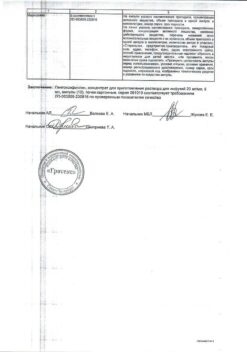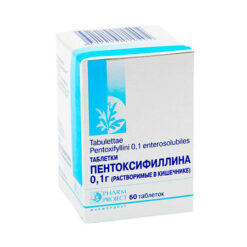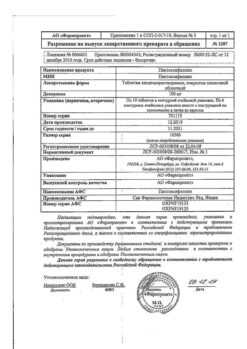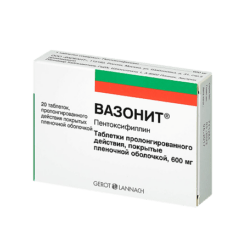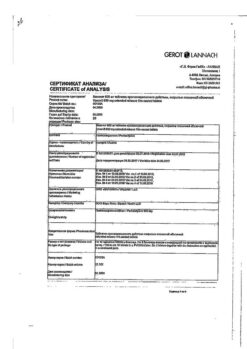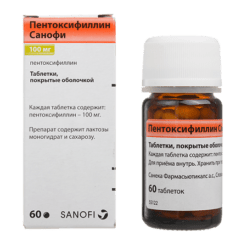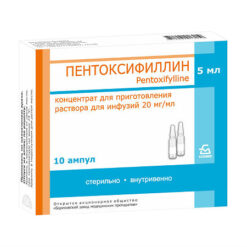No products in the cart.
Pentoxifylline, 20 mg/ml concentrate 5 ml 10 pcs
€1.00
Out of stock
(E-mail when Stock is available)
Description
Pharmacotherapeutic group:
Vasodilator.
ATX code
[C04AD03] Pharmacological properties
Pharmacodynamics
Pentoxifylline is a xanthine derivative. It improves microcirculation and rheological blood properties. Mechanism of action is associated with inhibition of phosphodiesterase and increasing of cyclic 3,5 adenosine monophosphate (3,5-AMP) in platelets and adenosine triphosphate (ATP) in erythrocytes with simultaneous saturation of energy potential, which in turn leads to vasodilation, reduction of total peripheral vascular resistance, increase of systolic and minute blood volume without significant change in heart rate. By dilating the coronary arteries, it increases oxygen delivery to the myocardium (slight antianginal effect), pulmonary vessels – improves blood oxygenation.
When administered intravenously it leads to increased collateral circulation, increased blood volume flowing through a section unit.
Reduces blood viscosity, causes platelet disaggregation, increases erythrocyte elasticity (by affecting abnormal deformability of erythrocytes). Improves microcirculation in areas of poor circulation.
When peripheral arterial occlusive disease (“intermittent claudication”) leads to the elongation of walking distance, eliminating night cramps of the calf muscles and pain at rest.
Pharmacokinetics
The drug is quickly metabolized after administration in the liver. During metabolism two main metabolites are formed: 1-(5-hydroxyhexyl)-3,7-dimethylxanthine (metabolite I) and 1-(3-carboxypropyl)-3,7-dimethylxanthine (metabolite V), which have similar activity to pentoxifylline. In 1.5-2 hours after infusion, plasma concentrations of metabolites I and V are, respectively, 5 and 8 times higher than those of the parent substance. By 8 hours the concentration of pentoxifylline and its metabolites in blood is significantly reduced (up to 10% of the initial concentration).
Half-life is from 30 minutes to 1.5 hours. It is excreted mainly by kidneys (94%) as metabolites (mainly metabolite V) and intestines (4%). 90% of dose is excreted in the first 4 hours. 2% of the drug is excreted unchanged. Pentoxifylline and its metabolites are not bound to plasma proteins.
excreted with breast milk.
With severe renal impairment excretion of metabolites is delayed. In liver dysfunction there is prolongation of half-life and increased bioavailability.
Indications
Indications
Active ingredient
Active ingredient
Composition
Composition
Excipients:
sodium chloride – 6 mg, sodium dihydrophosphate dihydrate (sodium phosphate displaced 2-water) – 1 mg, 0.1 M sodium hydroxide solution to pH 6.0 – 8.0, water for injection to 1 ml.
How to take, the dosage
How to take, the dosage
Interaction
Interaction
Special Instructions
Special Instructions
Contraindications
Contraindications
Side effects
Side effects
Overdose
Overdose
Treatment: symptomatic, aimed at maintaining respiratory function and blood pressure.
Pregnancy use
Pregnancy use
If it is necessary to prescribe Pentoxifylline during lactation, breastfeeding should be stopped due to the fact that Pentoxifylline penetrates into the breast milk (according to the section “Pharmacokinetics”).
Similarities
Similarities
Additional information
| Shelf life | 2 years. |
|---|---|
| Conditions of storage | In the dark place at a temperature not exceeding 25 ° C. Keep out of reach of children. |
| Manufacturer | Welfarm, Russia |
| Medication form | concentrate for preparation of infusion solution |
| Brand | Welfarm |
Other forms…
Related products
Buy Pentoxifylline, 20 mg/ml concentrate 5 ml 10 pcs with delivery to USA, UK, Europe and over 120 other countries.



